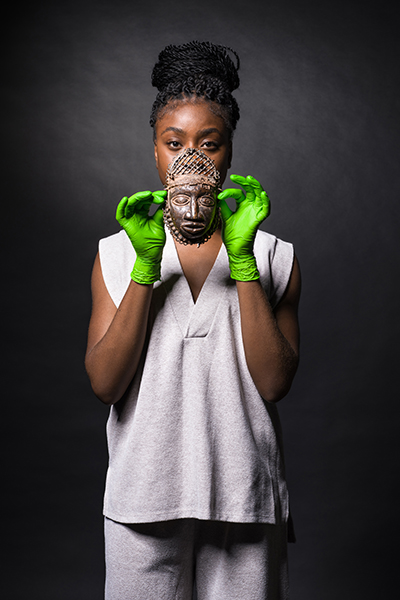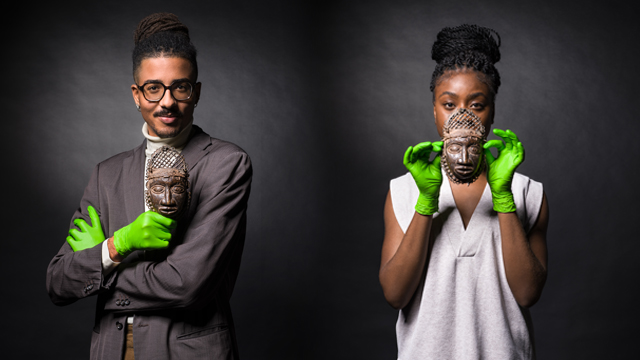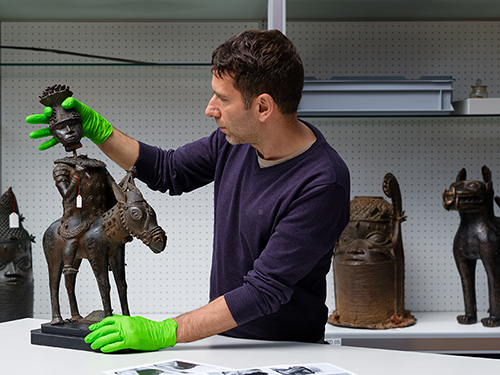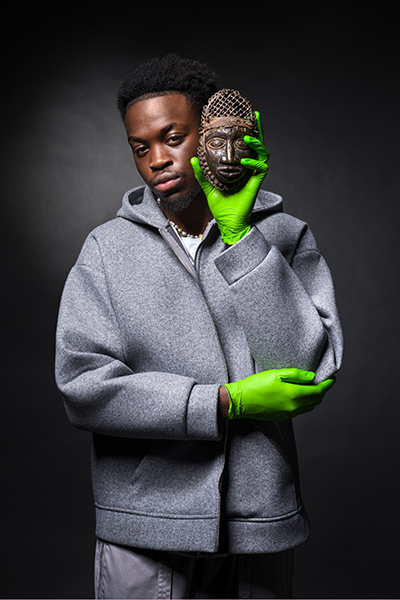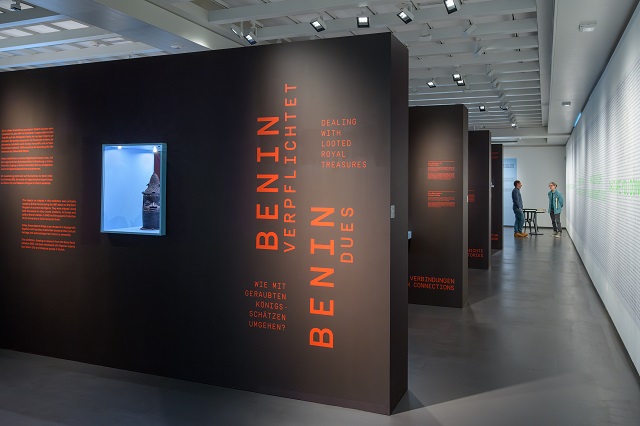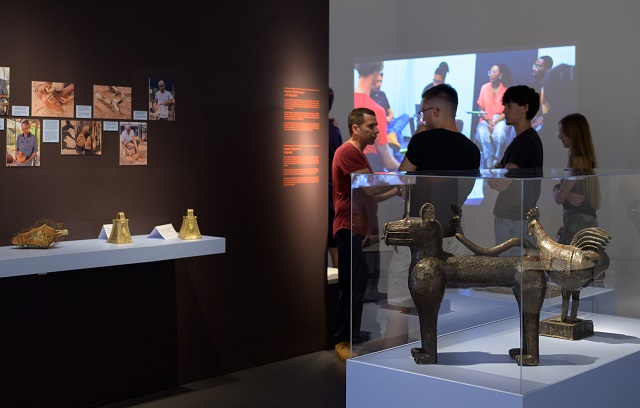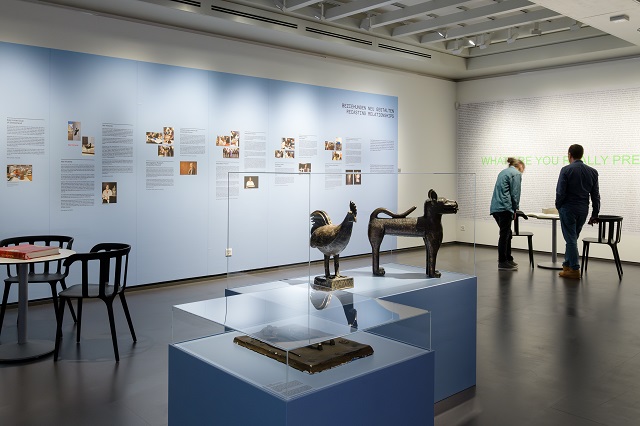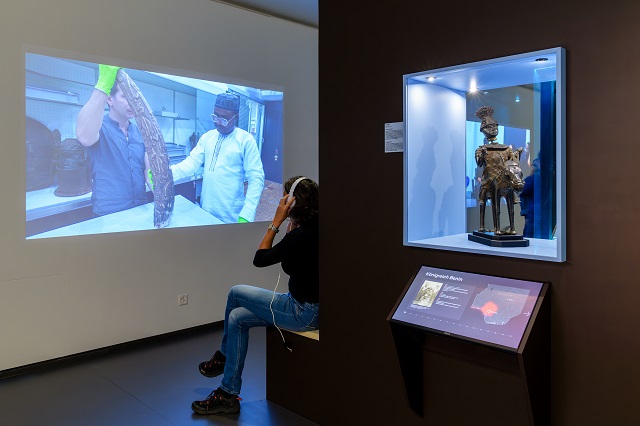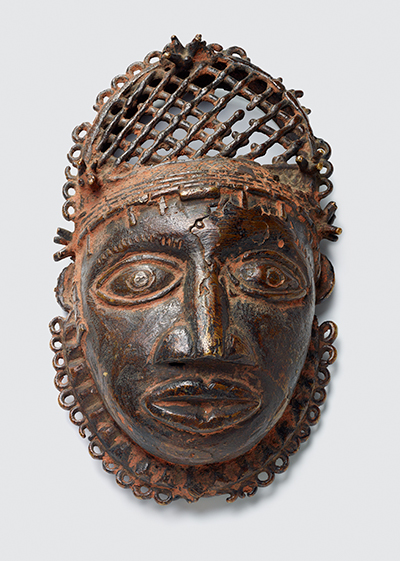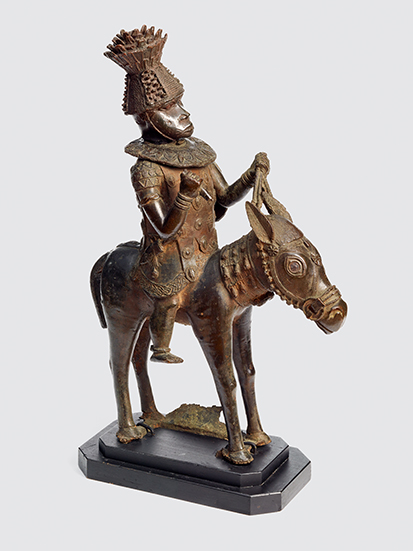Media Release and Material
Zurich, 22 August 2024
Exhibiting Looted Artifacts from Benin: A Space for Nigerian Voices
Why are objects from the Kingdom of Benin held in the Ethnographic Museum at the University of Zurich? What do they mean to different stakeholder groups? And how should institutions deal with them? The exhibition "Benin Dues", which draws on the views of Nigerian experts and representatives of diaspora communities, answers some of these questions.
Few ethnological issues have attracted more attention in recent years than the so-called Benin Bronzes. Looted from the Kingdom of Benin in 1897, the elaborately decorated artifacts are now held in museums and collections all over the world. Discussions among scholars, museum professionals and journalists about what should happen to them are often controversial, and sometimes verge on the polemical. However, the debates rarely feature the voices of those with a personal link to this cultural heritage.
From private ownership to museum storeroom
The collection belonging to the Ethnographic Museum of the University of Zurich (UZH) also contains 18 objects from the Kingdom of Benin, 14 of which were very likely looted, according to research conducted by the Swiss Benin Initiative (BIS).
The objects were acquired in 1940 by the erstwhile Ethnographic Collection of the University of Zurich from the then Swiss Volksbank, which had previously seized them from Zurich art collector Han Coray, when he filed for bankruptcy in 1931. Coray had purchased the sculptures, relief plaques and other objects on the art market in the early 20th century, when African artifacts were highly sought-after among European intellectuals, artists and collectors.
The Benin Bronzes: living cultural heritage
The objects held by the Ethnographic Museum at UZH have not been publicly displayed for 20 years and are being exhibited again for the first time in "Benin Dues" alongside information on their problematic, and not fully clarified, provenance. The artifacts are presented in display cabinets that can be viewed from two sides, thereby allowing visitors to engage with different aspects of them. For example, the back of one relief plaque bears the inventory number of the collector Coray, thereby referencing the practices of European art lovers. On the other side of the display cabinet, Nigerian Benin historian Patrick Oronsaye explains the actual significance of the object, which was once produced not as an artwork but as a visual archive of the Kingdom.
The history of the objects is closely tied up with the history of the Kingdom of Benin. This is because Benin had no writing system, so important events were recorded in relief plaques (or ama) and other artifacts. When they were looted, the Kingdom’s historical archive was also torn apart. The exhibition features two such plaques and shows how they were cared for in Benin to keep the bronze shiny using salt, ash and lime.
The Bronze Caster Guild is still located in Benin City, which is now the capital of Edo State. Bronze caster Phil Omodamwen recreated a historic bell and produced other exhibits on behalf of the museum to illustrate the various stages in the casting process. The objects will in future lawfully belong to the Ethnographic Museum.
Voices from Nigeria and the Nigerian diaspora
But how should the looted royal treasures be dealt with in the museum’s own collection? "In the exhibition, we ask the communities whose opinion matters to us: Nigerian experts and members of the Nigerian diaspora in Switzerland," explains curator Alexis Malefakis. The Edo United Club of Switzerland was consulted in the development of the exhibition; two representatives explain in video projections what the objects mean to them and how they envisage the handling of their cultural heritage.
By working with the African Students Association of Zurich ASAZ from UZH and ETH Zurich, the exhibition incorporates the perspectives of young Afro-Swiss. "The opening of the exhibition is a first important step," says curator and provenance researcher Alice Hertzog. "We hope that while the exhibition is running, there’ll be further opportunities to engage with and discuss the topic." There is therefore also a free space for events in the exhibition hall.
A paradigm shift in dealing with looted artifacts
Considering what to do with looted artifacts is an issue for the academic community and cultural sector. Directors of ethnographic museums in German-speaking countries published the Heidelberg Statement in 2019 and the Zurich Declaration in 2024. A number of museums have already restituted objects from Benin to Nigeria – either physically or by handing over ownership rights.
The Swiss Benin Initiative, which is supported by the Federal Office of Culture (FOC), has researched the provenance of the Benin objects in Switzerland in collaboration with Nigerian institutions. The Ethnographic Museum at the University of Zurich co-drafted the Joint Declaration of the Swiss Benin Initiative, which supports calls for objects to be restituted. As owner of objects from Benin, the University of Zurich and ultimately the cantonal authorities are now examining the next steps. Museum Director Mareile Flitsch talks of a paradigm shift: "Ethnographic museums now need to reconsider past world views and attitudes. Our collections offer unique opportunities to engage with their creators and their descendants. This collaborative process is changing the way the objects are collected, researched and presented."
|
«Benin Dues. Dealing with Looted Royal Treasures?» Ethnographic Museum exhibition opening event: Friday, 23 August 2024 at 6:00pm (in English) Download (PDF, 127 KB) press release 22.08.2024 "Benin Dues" |
Contacts
Ethnographic Museum at the University of Zurich
Dr. Alexis Malefakis, curator
+41 44 634 90 21
malefakis@vmz.uzh.ch
Dr. Alice Hertzog, curator (on parental leave until end of October 2024)
+41 44 634 90 25
hertzog@vmz.uzh.ch
Media Relations
University of Zurich
+41 44 634 44 67
mediarelations@kommunikation.uzh.ch
|
Legal notice Copyright All content, text, images, graphics, photographs or other files on our website are protected by copyright. They belong exclusively to the University of Zurich or to the expressly named copyright holders. The use of any elements – in particular commercial use – by third parties is prohibited unless the express written consent of the copyright holder has been obtained or obtained in advance from third parties. The mere downloading or copying of content, text, images, graphics, photographs or other files does not transfer any rights. Permission of use for media representatives The image files, graphics or photographs expressly designated as "press pictures" on our website may be used exclusively by media representatives (free of charge), provided that the media coverage is in connection with a past, current or future exhibition. The aforementioned use must necessarily include the following photo credit: © Völkerkundemuseum der Universität Zürich, photographer: respective surname, first name. Any other use is prohibited. |

